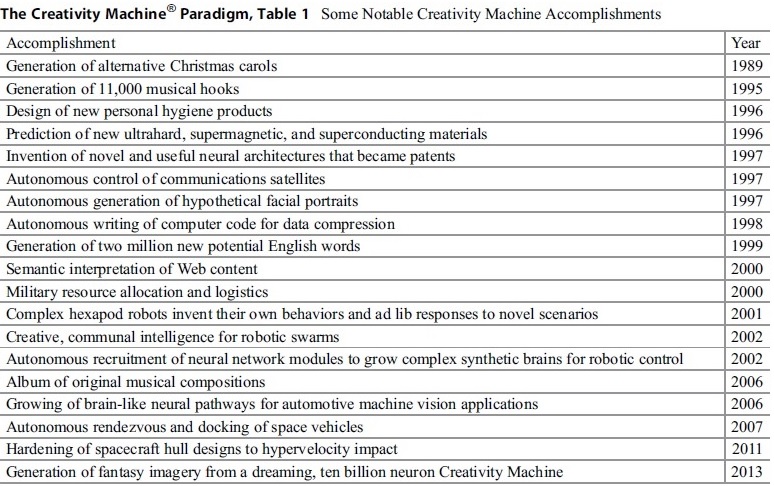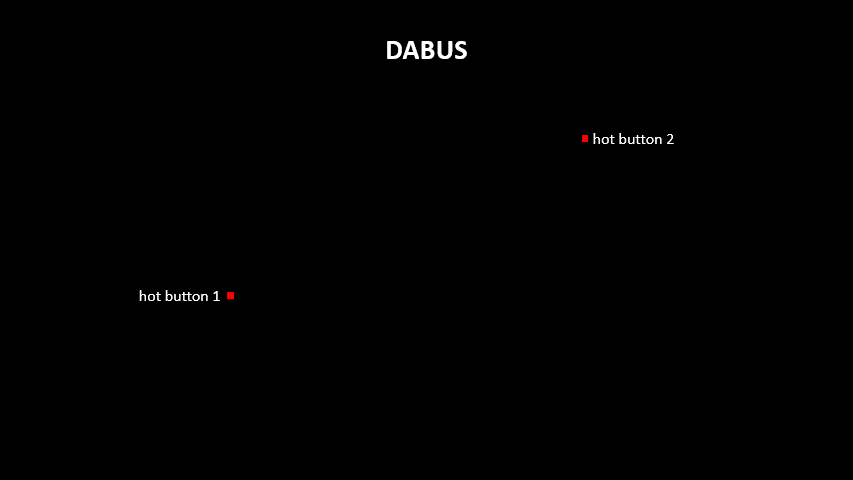IEI's Scientific Mission
 We intend to continually devise highly advanced artificial neural systems that manifest all aspects of human cognition, creativity, consciousness, and sentience, while at the same time harnessing these cognitive architectures to invent and create. We may truthfully claim that our systems have produced the first patent-worthy inventions autonomously created via machine intelligence, not parametric optimizations but the combination of simple concepts into more complex ones. Furthermore, these systems develop subjective feelings for what they conceive so that they may appreciate their accomplishments at what we would consider an emotional level.
We intend to continually devise highly advanced artificial neural systems that manifest all aspects of human cognition, creativity, consciousness, and sentience, while at the same time harnessing these cognitive architectures to invent and create. We may truthfully claim that our systems have produced the first patent-worthy inventions autonomously created via machine intelligence, not parametric optimizations but the combination of simple concepts into more complex ones. Furthermore, these systems develop subjective feelings for what they conceive so that they may appreciate their accomplishments at what we would consider an emotional level.
A Short Scientific History of IEI
Beginning in 70s, our founder, Steve Thaler, became fascinated with the young field of artificial neural nets and began experimenting with them as he pursued his Ph.D. in physics. Sure, he could train them as input-output maps to predict or classify, but curiosity got the best of him as he wondered what would happen if he gradually destroyed a trained net from the inside out, snipping connections or nullifying neurons therein. During such “death” sequences, nets first revisited their accumulated experiences as they output intact memories they had learned in training. However, as the disconnections escalated, he observed regimes in which the damage seeded the appearance of slight twists on these memories, many of which could qualify as potential ideas. Generalizing this process further, he found that such damage could take the form of mild disturbances to the neurons and connection weights within a trained neural net, resulting in a succession of memories at low disturbance levels. Then, at higher perturbation levels the net would output a stream of somewhat degraded memories called confabulations, many of which qualified as a potential idea.
From these experiments came three important lessons: (1) Ideas, ironically, were likely the result of mistakes being made within biological neural nets; (2) The brain’s stream of consciousness could be emulated purely through the introduction of chaos into train nets; and (3) Practical idea-generating artificial neural systems could be built by attaching a critic algorithm, or preferably another neural net, to such perturbed neural nets that could capture the most salient of these ideas. Realizing the implications of these experiments, the concept of brainstorming neural nets was born, what came to be known as the “Creativity Machine” paradigm within the scientific literature, and “Device for the Autonomous Generation of Useful Information” (DAGUI) at patent offices around the world (1997). First applications of this patented system were in materials discovery with the US Air Force Research Laboratory (AFRL) in 1998. Another important application of these generative neural systems was the disambiguation of natural language as various US Intelligence agencies scoured the Internet for signs of terrorist coordination and planning (2001).

- from The Creativity Machine Paradigm, Encyclopedia of Creativity, Invention, Innovation, and Entrepreneurship, (ed.) E.G. Carayannis, Springer Science+Business Media, LLC, 2013.
Fast forwarding to the early 2000s, he had another idea, namely the introduction of reinforcement learning into the DAGUI architecture. Put simply, any time the chaotized generator net, called an “imagitron,” produced an idea that was judged salient by a critic or discriminator net, the numerical figure of merit thereby generated was used to modulate learning rate or the amount of chaos injected into the generator, thus reinforcing more important notions within the generator while weakening all others. Thus, freshly produced ideas could either be used in real time, archived, or hybridized with other memories within the generator to progressively innovate even more interesting ideas. From this improvement patent came major innovations in control systems that could be played against themselves to improve their ability to improvise new strategies, for both constellations of communications satellites (1998) and battlefield robots (2003). At the heart of these systems were a new kind of Creativity Machine known as a DABUI (Device for the Autonomous Bootstrapping of Useful Information).
 In the late 2000s, Thaler aimed to build even larger Creativity Machines, but faced a significant challenge coupling together many generator nets and then unifying their joint output patterns into complex ideas often encoded through as many as millions to billions of neuron activations. The challenge then amounted to building extraordinaryily large critic nets to evaluate these combined patterns, requiring impractically large training sets and time. After significant R&D, he chose an entirely new tack that took the company away from the idea of generators brainstorming with critics, as well as the notion of neuron activation patterns serving to encode memories and ideas. Instead, he devised simple learning rules that allowed myriad neural nets, each having absorbed some conceptual space, to interconnect into chains representing compound concepts. Having formed, these ideational chains in turn sprouted subsidiary chains of nets representing the consequences of the base idea, in effect producing a functional definition of the underlying concept. Then when these chains tapped special neural modules called “hot buttons,” the entire swarm of nets were infiltrated with simulated reward neurotransmitters to reinforce these chains, both concepts and their repercussions, thus creating stable memories that could be reactivated through mild perturbations within the system. This paradigm shift in neural nets earned a new patent called "Device for the Autonmous Bootstrapping of Unified Sentience" or "DABUS," which in the US took on a different name, "Electro-optical device and method for identifying and inducing topological states formed among interconnecting neural modules" As that long title implies, electro-optical, rather than just electrical, high-speed serial transfer techniques were employed to overcome the inherent bottlenecks between chaining models and detection stages continuously searching for critical hot button resonances. (See Vast Topological Learning and Sentient AGI.)
In the late 2000s, Thaler aimed to build even larger Creativity Machines, but faced a significant challenge coupling together many generator nets and then unifying their joint output patterns into complex ideas often encoded through as many as millions to billions of neuron activations. The challenge then amounted to building extraordinaryily large critic nets to evaluate these combined patterns, requiring impractically large training sets and time. After significant R&D, he chose an entirely new tack that took the company away from the idea of generators brainstorming with critics, as well as the notion of neuron activation patterns serving to encode memories and ideas. Instead, he devised simple learning rules that allowed myriad neural nets, each having absorbed some conceptual space, to interconnect into chains representing compound concepts. Having formed, these ideational chains in turn sprouted subsidiary chains of nets representing the consequences of the base idea, in effect producing a functional definition of the underlying concept. Then when these chains tapped special neural modules called “hot buttons,” the entire swarm of nets were infiltrated with simulated reward neurotransmitters to reinforce these chains, both concepts and their repercussions, thus creating stable memories that could be reactivated through mild perturbations within the system. This paradigm shift in neural nets earned a new patent called "Device for the Autonmous Bootstrapping of Unified Sentience" or "DABUS," which in the US took on a different name, "Electro-optical device and method for identifying and inducing topological states formed among interconnecting neural modules" As that long title implies, electro-optical, rather than just electrical, high-speed serial transfer techniques were employed to overcome the inherent bottlenecks between chaining models and detection stages continuously searching for critical hot button resonances. (See Vast Topological Learning and Sentient AGI.)
Now IEI has arguably achieved conscious, sentient AI that may be used to either model the human brain or create new intellectual property.
